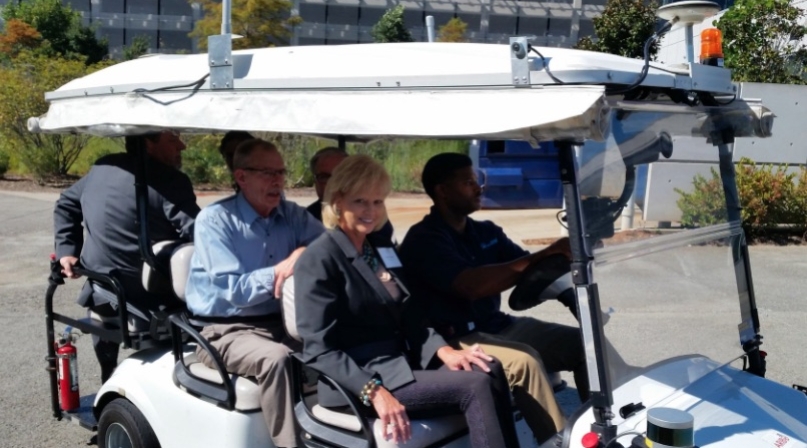FHWA peer exchange maps new ways to roadway safety

A sharp increase in roadway deaths and serious injuries prompted the Roadway Safety Peer Exchange
Fact: Each year, American roads take almost six times the number of lives lost during the conflicts in Iraq and Afghanistan. According to the National Safety Council, the 2016 death toll alone on public roads crossed 40,000. These are not mere statistics, these are our neighbors, mothers, fathers, sons, daughters, co-workers and friends. The deaths are linked to human error, bad roads, technology-distracted drivers and drivers impaired by drugs and alcohol.
South Carolina ranks No. 1 in state highway fatalities.
Learn More
For more information on how your county can advance local road safety efforts, please contact Sanah Baig
The sharp increase in roadway deaths and serious injuries was the impetus for dozens of National Association of Counties (NACo) leaders from across the nation to come together Sept. 7-8 in Greenville County, S.C. for a Federal Highway Administration (FHWA)-sponsored “Roadway Safety Peer Exchange.”
The idea exchange focused on analyzing the situation and proposing real solutions. “Ours will be a data-driven solution. The data shows 30 percent of our deaths involve just 5 percent of our roads. We will focus $50 million dollars per year for the next decade on highway safety beginning with those 5 percent.
There will be no standard program. We will customize solutions to specific dangers,” Woodrow Willard, chair, South Carolina Department of Transportation Commission told participants.
Another voice for data-based solutions was John Horsley, former NACo president. “We must raise public awareness and develop local road safety plans,” he said, while calling upon county leaders to define their highway safety issues with statistics.
The peer exchange attendees took a mobile tour where they inspected a portion of U.S. Highway 25, the notorious Greenville County White Horse Road corridor. This treacherous 13-mile strip experienced, over a five-year period: 57 deaths, 2.5 crashes per day and more than 4,552 accidents. These dubious statistics helped the stretch earn the title of “worst of the worst” from the South Carolina Department of Transportation. Greenville County Council Members Ennis Fant and Lynn Ballard gave a running narrative as the tour bus drove down the road.
After seeing safety problems firsthand, participants visited Clemson University’s International Center for Automotive Research and were briefed about a technological solution — an automated electric vehicle shuttle (A-Taxi).
Experts from Robotic Research briefed NACo leaders about the SAE Level-5 qualified vehicle with LIDAR, radar, GPS and cameras as redundant automation equipment, a forerunner to a driverless car revolution. County leaders rode in the A-Taxi with a state-required, licensed “safety operator” at the wheel.
One of the peer exchange discussion leaders, Brian Roberts of the National Association for County Engineers (NACE), challenged everyone to join the National Safety Council’s Road to Zero Coalition.
As connected and autonomous vehicles continue to dominate transportation discussions, an important consideration is the potentially transformative impact of driverless cars on the incidence of fatal traffic accidents. According to a McKinsey & Company report, by simply taking human emotions and errors out of the equation, deaths on the road could be reduced by 90 percent.
That would equal almost 300,000 lives saved each decade in the United States, alongside annual savings of $190 billion in healthcare costs associated with accidents.
While cell phones and texting technology may be causing a massive increase in road fatalities by distracted drivers, technological innovations, in the end, may help solve the problem.
Attachments
Related News

Counties directly eligible for $5.2 billion in competitive transportation grants
Counties are directly eligible for $5.2 billion in competitive transportation grants.

Counties directly eligible for $2.4 billion through USDOT rail safety improvement program
Counties are directly eligible for $2.4 billion through USDOT rail safety improvement program.

County Countdown – March 19, 2024
Every other week, NACo’s County Countdown reviews top federal policy advocacy items with an eye towards counties and the intergovernmental partnership.
